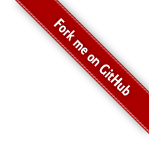language » C/C++编程心得(四)
2019-07-23 :: 6929 Words- Defaulted & Deleted
- assert
- const
- 虚函数
- typedef struct
- cout格式化输出
- 小细节
- POD
- 命令行解析
- std::any & std::variant & std::optional
- std::transform
- std::string
Defaulted & Deleted
特殊成员函数主要包括:
1.默认构造函数(不带参数的构造函数)
2.析构函数
3.赋值函数(operator=)(按字节拷贝)
4.拷贝构造函数(用一个对象来初始化另一个对象,只有一个参数,参数类型是本类的引用。X(X&))(按字节拷贝)
5.移动构造函数(X(X&&))
6.移动赋值函数
其中,2、3、4被称为big three,2、3、4、5、6被称为big five。5、6是C++11中引入右值和move的结果。
https://www.jianshu.com/p/0b0f84b49736
C++缺省函数(big three,big five)
class X{
public:
X(int i){
a = i;
}
X(const X&) = delete;
X()=default;
private:
int a;
};
X x;
由于已经有了X(int i),编译器就不会生成默认的X()了,因此X x;会出错。解决办法是X()=default;。
如果想禁用默认函数的话,可以使用=delete。上例中,就是禁用默认的拷贝构造函数的示例。
default仅用于类的特殊成员函数,且该特殊成员函数没有默认参数。
class X {
public:
int f() = default: //错误,f()非特殊成员函数
X(int) = default; //错误,非默认构造函数
X(int i = 1) = default; // 错误,含有默认参数
}
参考:
https://www.ibm.com/developerworks/cn/aix/library/1212_lufang_c11new/index.html
C++11标准新特性:Defaulted和Deleted函数
assert
assert(ExprSymbol && "Function not found");
这个用法挺有意思的。
const
class A
{
void function() const; //常成员函数, 它不改变对象的成员变量,
//也不能调用类中任何非const的成员函数。
}
const:在编译期保证在C的“源代码”里面,没有对其修饰的变量进行修改的地方(如有则报错,编译不通过),而运行期该变量的值是否被改变,则不受const的限制。
volatile:“请不要做自以为是的优化,这个值可能变掉的”,而并非“你可以修改这个值”。
const volatile:变量在程序编译期不能被修改且不能被优化;在程序运行期,变量值可修改,但每次用到该变量的值都要从内存中读取,以防止意外错误。
虚函数
class Shape {
public:
virtual void Draw() const = 0; // 1) 纯虚函数
virtual void Error(const string& msg); // 2) 普通虚函数
int ObjectID() const; // 3) 非虚函数
};
class Rectangle: public Shape { ... };
- 非虚函数:
基类和派生类都有该函数:
Rectangel rc; // rc is an object of type Rectangle
Shape *pB = &rc; // get pointer to rc
Rectangle *pD = &rc; // get pointer to rc
pB->ObjectID(); // calls Shape::ObjectID()
pD->ObjectID(); // calls Rectagle::ObjectID()
如果派生类没有该函数,则无论pB->ObjectID();还是pD->ObjectID();都调用Shape::ObjectID()。
- 普通虚函数:
基类和派生类都有该函数:
Rectangel rc; // rc is an object of type Rectangle
Shape *pB = &rc; // get pointer to rc
Rectangle *pD = &rc; // get pointer to rc
pB->ObjectID(); // calls Rectagle::ObjectID()
pD->ObjectID(); // calls Rectagle::ObjectID()
如果派生类没有该函数,则无论pB->ObjectID();还是pD->ObjectID();都调用Shape::ObjectID()。
- 纯虚函数虽然要求派生类必须实现该函数,但并不意味着基类就不可以实现。但需要用特殊的语法才能调用基类实现。
ps1->Shape::Draw(); // calls Shape::draw
基类和派生类都有该函数的情况与普通虚函数相同。
这是override的4种错误情况:
class Base {
public:
virtual void mf1() const;
virtual void mf2(int x);
virtual void mf3() &;
void mf4() const;// is not declared virtual in Base
};
class Derived: public Base {
public:
virtual void mf1();// declared const in Base, but not in Derived.
virtual void mf2(unsigned int x);// takes an int in Base, but an unsigned int in Derived
virtual void mf3() &&;// is lvalue-qualified in Base, but rvalue-qualified in Derived.
void mf4() const;
};
由于声明上的差异,这4种情况均无法override,且不易查找。
class Derived: public Base {
public:
virtual void mf1() const override;// adding "virtual" is OK, but not necessary
virtual void mf2(int x) override;
void mf3() & override;
void mf4() const override;
};
添加override关键字之后,就会去基类中查找是否有匹配成员函数,否则直接报错。
对‘vtable for xxxx’未定义的引用:
必须吐槽一下C++的错误提示,这个错误如果改成没有实现XXX虚函数,就直观的多了。
参考:
https://www.cnblogs.com/xinxue/p/5471708.html
C++11之override
typedef struct
在C中:
typedef struct Student
{
int a;
}Stu;
于是在声明变量的时候就可:Stu stu1;
如果没有typedef就必须用struct Student stu1;来声明。
这里的Stu实际上就是struct Student的别名。
但是在C++中:
struct Student
{
int a;
};
声明变量时可直接Student stu2;
所以当给C++的库提供C的接口时,经常可以看见如下用法:
typedef struct Student Student;
这样就可以抹平两者的差异了。
参考:
https://www.cnblogs.com/qyaizs/articles/2039101.html
struct和typedef struct彻底明白了
cout格式化输出
cout<<hex<<i<<endl; //输出十六进制数
cout<<oct<<i<<endl; //输出八进制数
cout<<dec<<i<<endl; //输出十进制数
小细节
对于std::vector来说,begin()/end()返回iterator,而front()/back()返回的是element。此外,还有cbegin()/cend()返回const iterator。
template< class InputIt >
vector( InputIt first, InputIt last,
const Allocator& alloc = Allocator() );
这个构造函数很有意思,可以用于复制一个[first, last)区间的数据。
除了for循环遍历之外,C++还可以用std::for_each/std::find_if进行循环遍历,尤其是后者可以用于条件筛选。
for(auto& item: list)
{
//do sth
}
还有一些方法可用于统计:
std::all_of, std::any_of, std::none_of:全都是/至少有一个是/全都不是XXX。
std::count, std::count_if:计数。
map:存储key-value pair。iterator->first指向key,而iterator->second指向value。
set:只有value。set也有unordered_set这样的变种。
map和set都不允许重复值,如果需要重复的话,可以使用multiset和multimap。
template<typename T>
struct S {
template<typename U> void foo(){}
};
template<typename T>
void bar()
{
S<T> s;
s.foo<T>(); // error: < parsed as less than operator
s.template foo<T>(); // OK
}
上面是template的一种特殊用法,本来s.foo<T>()也就行了,然而编译器会把它当作s.foo<T,所以需要加上template以示区分。
数字转字符串:
double a = 123.32;
string res;
stringstream ss;
ss << a;
ss >> res;//Or res = ss.str();
字符串转数字:
string a = "123.32";
double res;
stringstream ss;
ss << a;
ss >> res;
#define DispatchOnTensorType(tensor_type, function, ...) \
switch (tensor_type->AsPrimitiveDataType()->GetDataType()) { \
case ONNX_NAMESPACE::TensorProto_DataType_FLOAT: \
function<float>(__VA_ARGS__); \
break; \
case ONNX_NAMESPACE::TensorProto_DataType_BOOL: \
function<bool>(__VA_ARGS__); \
break; \
case ONNX_NAMESPACE::TensorProto_DataType_DOUBLE: \
function<double>(__VA_ARGS__); \
break; \
POD
POD,全称plain old data,plain代表它是一个普通类型,old代表它可以与c兼容,可以使用比如memcpy()这类c中最原始函数进行操作。
POD数据类型主要用来解决C++与C之间数据类型的兼容性,以实现C++程序与C函数的交互。
参考:
https://blog.csdn.net/fu_zk/article/details/17028669
C++的POD数据类型
https://www.cnblogs.com/DswCnblog/p/6371071.html
C++11 POD类型
命令行解析
https://github.com/jarro2783/cxxopts
https://github.com/tanakh/cmdline
https://github.com/gflags/gflags
前两个是轻量级的库,只要包含header即可。gflags是Google的产品,适合比较高端的用法。
此外,boost::program_options也是一个选择。
和命令行解析相对的,就是命令行输出了。
https://github.com/agauniyal/rang
这个项目可以设置终端输出的颜色等效果。
std::any & std::variant & std::optional
std::any:一个类型安全的容器,可以放置各种类型的数据。类似于void*。
std::variant:类型安全的union。
std::optional:该类型是用来表示一个值是不是存在的。std::optional有两个状态,即有值和无值。通常我们将std::optional用于函数的返回值,当函数执行成功了返回有值的状态,当函数执行失败了返回无值的状态。
参考:
https://www.jianshu.com/p/b2ec40c1c7c1
C++17:std::any, std::variant 和 std::optional
std::transform
std::string s("Hello");
std::transform(s.begin(), s.end(), s.begin(),
[](unsigned char c) { return std::toupper(c); });
std::cout << s << std::endl; // HELLO
std::string
std::string有很多实现方式,归纳起来有三类,而每类又有多种变化。
1、无特殊处理(eager copy),采用类似std::vector的数据结构。现在很少采用这种方式。
2、Copy-on-write(COW),g++的std::string一直采用这种方式,不过慢慢被SSO取代。
3、短字符串优化(SSO),利用string对象本身的空间来存储短字符串。Visual C++ 2010、clang libc、linux gnu5.x之后都采用的这种方式。
https://www.cnblogs.com/cthon/p/9181979.html
c++再探string之eager-copy、COW和SSO方案

您的打赏,是对我的鼓励
